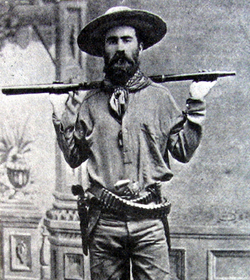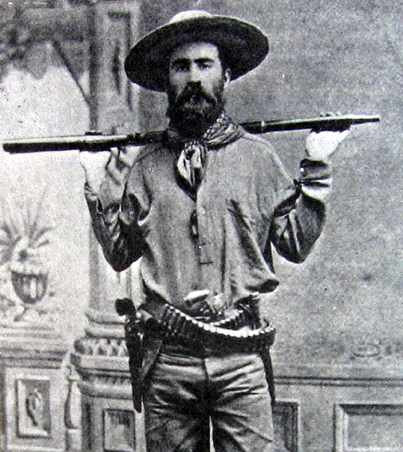George Parsons was educated at grammar schools in Brooklyn, New York, and at a seminary in Blairsville, Pennsylvania. Later he attended Brooklyn Polytechnic Institute where he graduated with an emphasis in accounting and bookkeeping. During his early business career he worked as a clerk for several brokerage firms and importers.
He had two brothers and three sisters, but one sister and one brother died in childhood. His sisters, Emeline (born 1854) and Alice Knight Parsons (born in 1855 and nicknamed "Strallus"), and his brother Samuel Sewell Parsons (born 1862) grew to maturity along with George.
George studied law in his fathers law office on Wall Street in New York City, but became dissatisfied with a legal career, and more importantly, unhappy with the cold Northern winters. So, in 1874 George struck out on his own for South Florida where he was a pioneer in what later became the Miami area. For over a year he engaged in the salvage business, selling lumber from ships wrecked by hurricanes. Many of the early cabins in the Key Biscayne Bay area were built with lumber supplied by George Parsons.
During his stay in South Florida, George met many fascinating people who would later become famous. Perhaps the most prominent of these individuals was William Temple Hornaday, who later became Director of the New York Zoo. In 1875 he and George camped outside their cabin one night because Hornaday had imprisoned an alligator in it. That alligator, according to George, "is now in the Smithsonian."
After almost drowning in a hurricane off Cape Sable one night, George decided to abandon Florida for warmer climates elsewhere. In mid-1876 he set out with a friend for California. They sailed to Central America and crossed the isthmus on horseback and then caught another ship for Los Angeles, arriving August 6, 1876. His friend was unhappy with the primitive-looking town of Los Angeles and a week later they arrived in San Francisco, where George worked as bank clerk for three years.
When George's mother died on June 22, 1869, at age 45, he was profoundly affected. He started keeping a private journal or diary to chronicle his thoughts and activities and perhaps to try to understand the emotional trauma of such a loss. As late as June 22, 1923, he would record in his now-famous diary, "Mother gone to Heaven 54 years ago." He never forgot her. He kept a daily diary for sixty years from 1869 to 1929.
When the National Gold Bank & Trust Co. shut down on July 31, 1879, George found himself out of work and unable to find anything to his liking in San Francisco. So, with Milton Clapp, another bank clerk who had married the boss's daughter, he set out early in 1880 for the new, booming mining camp of Tombstone, Arizona Territory.
They arrived on February 17, 1880, and George chronicles the daily events there for seven years. He was a good friend of Wyatt Earp and John Clum, the fourth mayor and pioneering editor of The Tombstone Epitaph, which stood for law and order. George was on the inner Council of Ten, the governing body of the Committee of 100 a Committee of Vigilance dedicated to helping the local peace officers (mostly the Earps) control the unruly cowboys from "shooting up the town" and killing law-abiding citizens. George was the "swearing in official" and would recall thirty-five years later how he would hold up his revolver for each applicant and tell him to "Kiss my six shooter" as part of the induction ceremony.
This current publication of his journal covers the period from March 27, 1879 to March 31, 1887 (in two volumes of about 400 pages each), six weeks after he arrived in Los Angeles. I have transcribed the Los Angeles years 1887 to 1929 and they will be published in the near future. The period from June 28, 1882 to October 31, 1882 was serialized in The Tombstone Epitaph from December 1967 to April 1968, and the entire year of 1880 ran in The Tombstone Tumbleweed during 1996.
I have spent thirty years transcribing fifty-one years of the diaries and identifying the more than 6,000 people. The first four journals containing the years 1869 to 1879 were not in the diaries given to Arizona Pioneers Historical Society in the mid-1930s. Anyone knowing their whereabouts should contact the editor.
George Parsons ceased his diary in 1929, even though he lived until January 5, 1933. He left an estate of $25,000, including $1,000 for St. Pauls Church in Tombstone and $500 for "a fountain in the desert," which was built in front of the Andrus Canyon Club in Palm Springs. George left money in his will to publish the Tombstone years of his diary, but his attorney and surviving sister deliberately ignored his request.
Bio information from: Carl Chafin and Lynn R. Bailey.
George Parsons was educated at grammar schools in Brooklyn, New York, and at a seminary in Blairsville, Pennsylvania. Later he attended Brooklyn Polytechnic Institute where he graduated with an emphasis in accounting and bookkeeping. During his early business career he worked as a clerk for several brokerage firms and importers.
He had two brothers and three sisters, but one sister and one brother died in childhood. His sisters, Emeline (born 1854) and Alice Knight Parsons (born in 1855 and nicknamed "Strallus"), and his brother Samuel Sewell Parsons (born 1862) grew to maturity along with George.
George studied law in his fathers law office on Wall Street in New York City, but became dissatisfied with a legal career, and more importantly, unhappy with the cold Northern winters. So, in 1874 George struck out on his own for South Florida where he was a pioneer in what later became the Miami area. For over a year he engaged in the salvage business, selling lumber from ships wrecked by hurricanes. Many of the early cabins in the Key Biscayne Bay area were built with lumber supplied by George Parsons.
During his stay in South Florida, George met many fascinating people who would later become famous. Perhaps the most prominent of these individuals was William Temple Hornaday, who later became Director of the New York Zoo. In 1875 he and George camped outside their cabin one night because Hornaday had imprisoned an alligator in it. That alligator, according to George, "is now in the Smithsonian."
After almost drowning in a hurricane off Cape Sable one night, George decided to abandon Florida for warmer climates elsewhere. In mid-1876 he set out with a friend for California. They sailed to Central America and crossed the isthmus on horseback and then caught another ship for Los Angeles, arriving August 6, 1876. His friend was unhappy with the primitive-looking town of Los Angeles and a week later they arrived in San Francisco, where George worked as bank clerk for three years.
When George's mother died on June 22, 1869, at age 45, he was profoundly affected. He started keeping a private journal or diary to chronicle his thoughts and activities and perhaps to try to understand the emotional trauma of such a loss. As late as June 22, 1923, he would record in his now-famous diary, "Mother gone to Heaven 54 years ago." He never forgot her. He kept a daily diary for sixty years from 1869 to 1929.
When the National Gold Bank & Trust Co. shut down on July 31, 1879, George found himself out of work and unable to find anything to his liking in San Francisco. So, with Milton Clapp, another bank clerk who had married the boss's daughter, he set out early in 1880 for the new, booming mining camp of Tombstone, Arizona Territory.
They arrived on February 17, 1880, and George chronicles the daily events there for seven years. He was a good friend of Wyatt Earp and John Clum, the fourth mayor and pioneering editor of The Tombstone Epitaph, which stood for law and order. George was on the inner Council of Ten, the governing body of the Committee of 100 a Committee of Vigilance dedicated to helping the local peace officers (mostly the Earps) control the unruly cowboys from "shooting up the town" and killing law-abiding citizens. George was the "swearing in official" and would recall thirty-five years later how he would hold up his revolver for each applicant and tell him to "Kiss my six shooter" as part of the induction ceremony.
This current publication of his journal covers the period from March 27, 1879 to March 31, 1887 (in two volumes of about 400 pages each), six weeks after he arrived in Los Angeles. I have transcribed the Los Angeles years 1887 to 1929 and they will be published in the near future. The period from June 28, 1882 to October 31, 1882 was serialized in The Tombstone Epitaph from December 1967 to April 1968, and the entire year of 1880 ran in The Tombstone Tumbleweed during 1996.
I have spent thirty years transcribing fifty-one years of the diaries and identifying the more than 6,000 people. The first four journals containing the years 1869 to 1879 were not in the diaries given to Arizona Pioneers Historical Society in the mid-1930s. Anyone knowing their whereabouts should contact the editor.
George Parsons ceased his diary in 1929, even though he lived until January 5, 1933. He left an estate of $25,000, including $1,000 for St. Pauls Church in Tombstone and $500 for "a fountain in the desert," which was built in front of the Andrus Canyon Club in Palm Springs. George left money in his will to publish the Tombstone years of his diary, but his attorney and surviving sister deliberately ignored his request.
Bio information from: Carl Chafin and Lynn R. Bailey.











